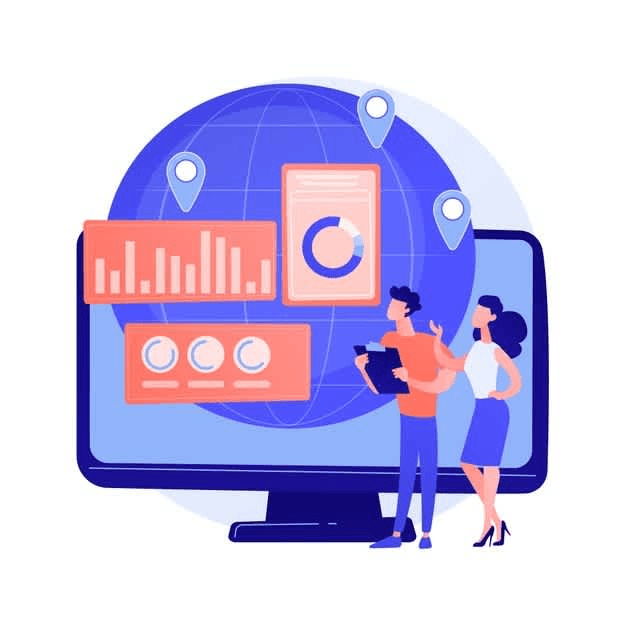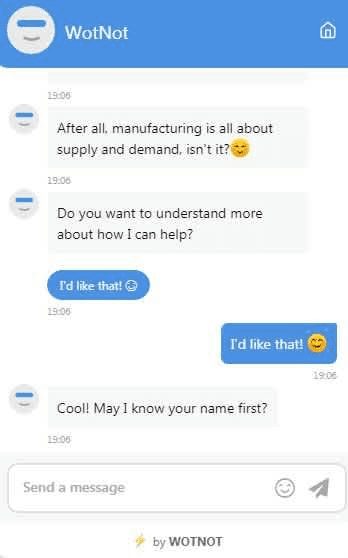Chatbot /
8 Min read
Top 5 Reasons Why your Website Chatbot is Not Performing
May 25, 2021

Hardik Makadia
CEO, WotNot
You’ve done it. After investing your time, resources and getting your team on board to try this ‘bot thing’’, you’ve deployed a chatbot on website. You’re awaiting the results, and after a few weeks, you notice that there are hardly any conversations happening on the bot. Your chatbot is not performing as it should, and you witness your efforts going down the drain, making you think if chatbots are even worth it.
What if I tell you they still are? Maybe, the problem was in its implementation? Or in your research? You read the success stories of chatbots on the website, but you probably overlooked researching their failure. Yes, chatbots have failed, more so than often. Organisations are often hasty in integrating the latest tech to stay trendy or just tick box a to-do thing in adding automation tools. Their failures are fairly evident since you’ll encounter many customer stories where they’ve had terrible experiences using a chatbot. If not done right, chatbot implementation can have a reverse effect on your brand image due to a frustrating user experience.

But then, why did your chatbot for website fail to bring results? How do you ensure that chatbots don’t obstruct your digital journey and actually reap benefits? How do you identify the loopholes and build a bot that pays off your efforts? Let’s take a look at some of the top reasons why bots fail and what you can do to avoid them.
Deploying the wrong type of chatbot
Just some chatbot trivia that you might already know: there are two types of chatbots- rule-based and AI. AI chatbots are more advanced and used to solve complex consumer queries. They incorporate Natural Language Processing (NLP) engines such as Dialogflow and IBM Watson and have Machine Learning capabilities that facilitate nuanced conversations stemmed from specific customer queries. On the other hand, rule-based bots have a flow chart type built with a controlled conversational flow.
What you might not know is how to decide which one to adopt for your website. The type of chatbot you integrate depends upon your use-cases. Many businesses miss out on identifying which chatbot would be the most suitable for them. You need to understand that just because chatbot has the word AI doesn’t necessarily make them better. Different? Yes. But better? No.
What can you do?
Think about the areas you’re implementing your bot, how you’re going to maintain them, the conversational outcome you aim to achieve, and what industry you’re in. A majority of chatbots are used to answer common queries. Rule-based bots are simple to build and relatively less expensive, and almost all SMEs fulfil their purpose with a rule-based chatbot. So think about it and determine what would work best for you. Implement an AI chatbot only if a rule-based chatbot cannot achieve your objectives. If you fail to add a bot that isn’t aligned with your use case and goals, it will likely fail in giving you your desired outcome.
No clear scope or use-case
A single bot cannot perform all your functions. If you’re deploying a chatbot, you need to be clear about what you want to achieve with it. Is the purpose of your bot to qualify leads? Is it to aid your user and provide customer support? Do you just want to engage with the user on the website and provide them with information? If your bot is doing everything at once, you cannot explicitly address their problem, and you can lose them.
What can you do?
Pick a purpose for your bot and stick to it. For example, if you’re deploying a chatbot for website and your aim is to provide your visitor with information, deploy a FAQ bot that can answer all their questions. It is advisable to limit your bot’s scope, narrow its use-cases for enabling smooth customer communication. To address different use-cases, deploy different chatbots for those specific pages on your website. It will allow you to have more precise conversations with your visitor.
Poor Script Design
If your consumers just wanted information, they can simply read your page content or your blogs. But they are speaking to a bot because they wish to converse. If your script doesn’t go in the user’s direction, they will leave in the blink of an eye, and your bot will not have that many conversations.
What can you do?
Your conversational flow needs to be directed towards a conclusion. Many chatbot builders have designed templates for different use-cases that can aid you with your script design. You just need to click on the template, and you’ll find it incorporated into the bot builder. You just simply need to edit it and deploy your chatbot on the website. If you’re just getting started with chatbots, templates can help a great deal and direct you in building future conversations as well.
Keep in mind: Chatbots need to be conversational. Your script should allow input from the user to pave the way for a two-way conversation that ends with user satisfaction. They need to be interactive, regardless of whether it’s a rule-based chatbot or an AI chatbot. Find a balance between too much personalisation and lack of personalization, formal and informal, and robotic and humane. Some top suggestions for a highly engaging conversational script:
Always add an introduction.
Don’t keep text-heavy messages. Break them into smaller texts and add a delay of 2 or more seconds for the user to read and comprehend your message
Give a hint that the user is speaking with a bot and not a person. You can do so by mentioning that in the introduction.
Keep the conversation casual. Don’t overdo emoticons, slang, or humour but adding some of it in your conversation can add the fun element to an otherwise mundane conversation.

Disregarding lead generation
Lead generation is one of the most crucial functions of a chatbot. If you’re deploying a chatbot for website, it means that you’ll be interacting with anonymous site visitors who have come to check out your company. One of the reasons why your chatbots aren’t bearing results is that even if people are visiting and conversing with the bot, you’re not capturing leads that help you connect with them in the future.
What can you do?
Your bot doesn’t need to be a pushy salesperson, but you can subtly generate leads by casually interacting with them. Once you strike a conversation with your visitors, develop your bot flow such that you can ask for their contact information while conversing with them. The conversation that your visitor has on the home page largely defines the number of leads you generate.

No Human Handover
Chatbots are only as smart as they are programmed to be. Even if you trust your bot to keep the visitor engaged, there are many possibilities that the conversation may go wrong. Your user can ask random or complex questions that your bot may not be trained to answer. If it repeatedly fails to understand the intent, your customer is going to close the conversation immediately. If you don’t have a model which includes a live chat, the consumer experience will crumble, leaving you with an angry customer.

What can you do?
Keeping a live chat option is a must when deploying chatbots, considering the customer sentiment and situation. Even though you ensure an emphatic tone in your conversational flow, your customers may still need to speak to a live agent instead, simply because they may not prefer talking to a bot altogether. Most of the complex queries asked to a chatbot are forwarded to a human because no matter how advanced your bot is, it has its limitations, technical or otherwise. You need to build a bot that knows its capabilities and understands when the user needs to speak to a human representative. Sometimes your customer will need to talk with an agent even when the bot can solve the issue. You cannot wholly depend on automation or live chat. You need to strike a balance between them to ensure the best of both worlds.

Final Thoughts
There are many aspects where your chatbot for website plan may go wrong, but with the correct planning and guidance, you can achieve your goals. What makes chatbots at least worth a chance is their easy build and DIY framework. You’re not hiring additional technical expertise, nor are you spending too much. With the determination to leverage this technology to the fullest, you can counter all these challenges and emerge successfully by continuous analysis and implementing measures for improvement.
ABOUT AUTHOR
Hardik Makadia
CEO, WotNot
His leadership, pioneering vision, and relentless drive to innovate and disrupt has made WotNot a major player in the industry.



